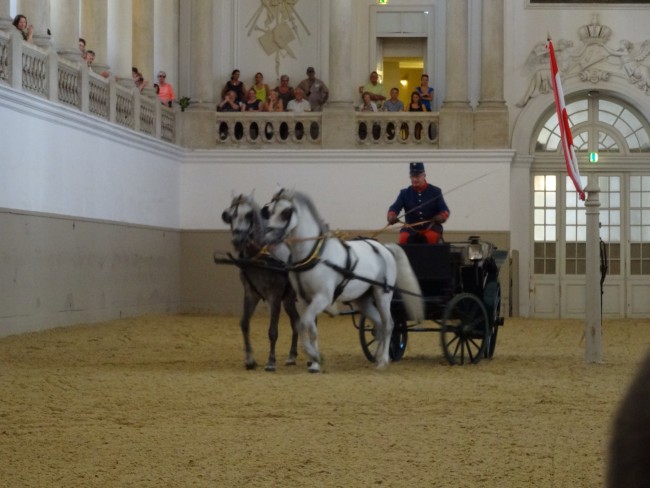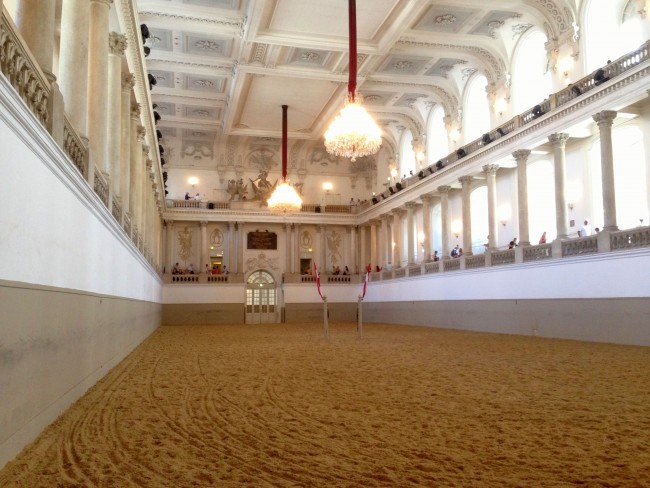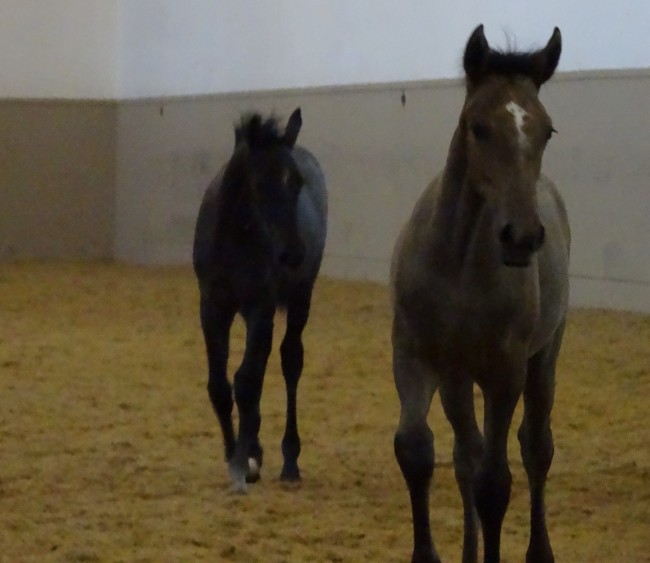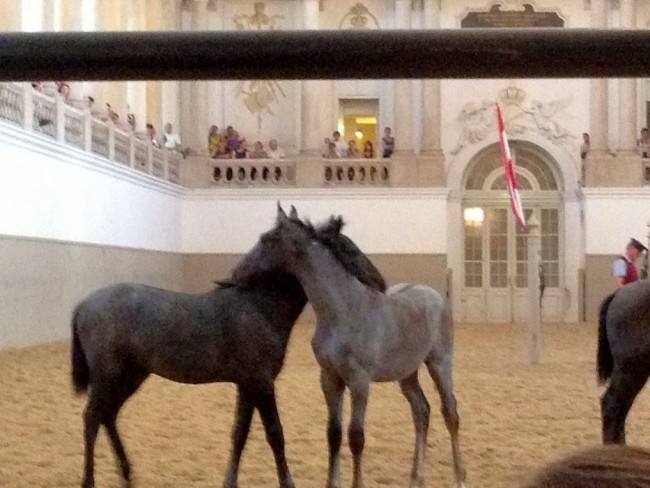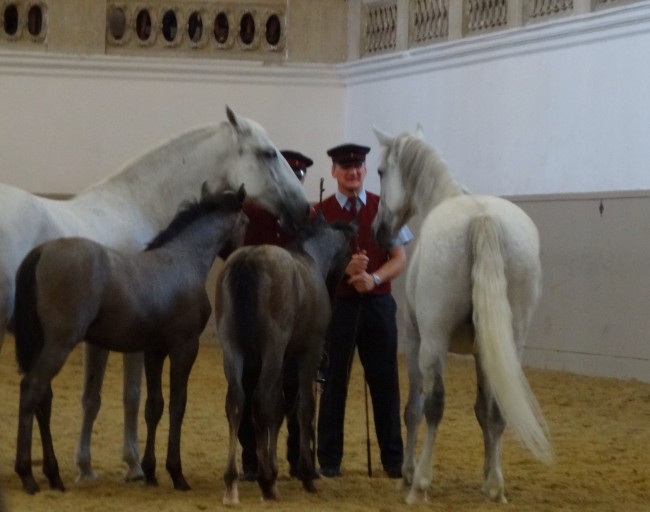Watching Classical Sportsmanship at the Spanish Riding School
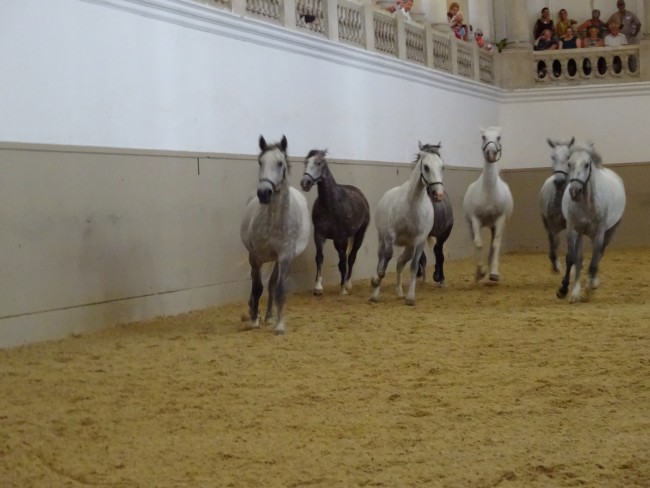
When my mom and I were in Vienna this summer, the only thing on her list of what to do in Vienna was to see the Lipizzaner horses.
“The what horses?” I asked.
“Oh, they’re amazing!” She breathed as if it was once again 40 years ago and she was watching these stallions perform in Montana (as I learned was how she’d first heard of these horses).
The Lipizzaner Horses have been bred for centuries and you can see them perform at the Spanish Riding School, which is focused on preserving classical equitation sportsmanship (think knight and rider and carriage driving with some old-school pizzazz). And for classical equitation, there is no horse more admired and revered than the Lipizzaner stallion.
Mom and I bought our tickets for a show online. Upon arriving at the Spanish Riding School — which is located in Hofburg Palace — we had to get in one line to show our ticket vouchers (get there early if you go as its a bit confusing and the ticket window and Spanish Riding School entrance aren’t right next to each other), got our tickets and then walked into the Spanish Riding School.
It. Was. So. Incredible!
I literally felt like I was about to watch a horse show during the Renaissance. The room is long and oval with two stories of seating lining the perimeter of the stadium. It has a very intimate feel as there aren’t that many rows going back and it’s very basic seating. The grand white ceiling has carved motifs in it with massive columns and arches.
Our show was a bit different than usual because we were there when the stars of the show — the stallions — were vacationing up in the country.
I didn’t mind this as it meant the cute little foals were in town in Vienna and were the stars of this show. Here you can see them running around with their moms.
While the foals were running around being adorable, the announcer — who switched between German and English — was telling us about the early life of a Lipizzaner horses.
Lipizzaner horses are born with darker coloring and get lighter as they get older. They used to be a range of colors but through selective breeding, Lipizzaner horses are mostly gray now, though there are some rare black Lipizzaner horses.
Lipizzaner foals learn very early to lift their feet (a big part of classical horsemanship) and they are groomed daily so that they immediately feel comfortable with humans.
At six months, Lipizzaner males are weaned. At one year, they are separated from their mothers and begin training to be an equitation horse. Lipizzaner stallions always spend summer up in mountains as it strengthens their muscles.
Females are assessed for the opportunity to be future brood mares (mothers). While we were at the Spanish Riding School 8 future brood mares were on display. These brood mares (all of whom were born in 2009) were chosen out of 20 contenders due to their smarts with riding and carriage driving – they must prove they can learn.
Each mare’s ancestry and character are also carefully scrutinized. This analysis and process of choosing the best mares to become breeders helps to ensure the continuation of strong lines for Lipizzaner horses. Because of their role in determining the future of the horse breed, brood mares are considered the Crown Jewels of Lipizzaners.
Another fun fact about Lipizzaner mares is that they get traditional, reoccurring names (given to them at 6 months) like Monterossa.
In addition to the females and foals, we saw historical carriages being led around by horses in training. Harnesses are created for each specific horse in order to avoid pressure sores.
The Tandem style was especially impressive. It’s a carriage pulled by four houses and is considered to be the utmost in carriage driving. The two horses in front are elite and lead the carriage, while the two in back are the pull horses – they provide the strength.
These horses must be impeccably trained and must readily respond to the sound of the driver’s voice. Witnessing this type of carriage pulling at the Spanish Riding School gives you an excellent example of the training and elegance the Spanish Riding School is known for. I captured some of the carriage riding in this video.
Spanish Riding School Quick Facts
What: A riding school that focuses on continuing the tradition of classical horsemanship.
Who: Lipizzaner horses and their trainers and riders.
Where: Michaelerplatz 1
When: The visitor center is open daily from 9 a.m. to 4 p.m. Performance days and times vary so check the Spanish Riding School website for performances while you’re in Vienna.
Website: www.srs.at
How: Tickets can be bought in advance here.
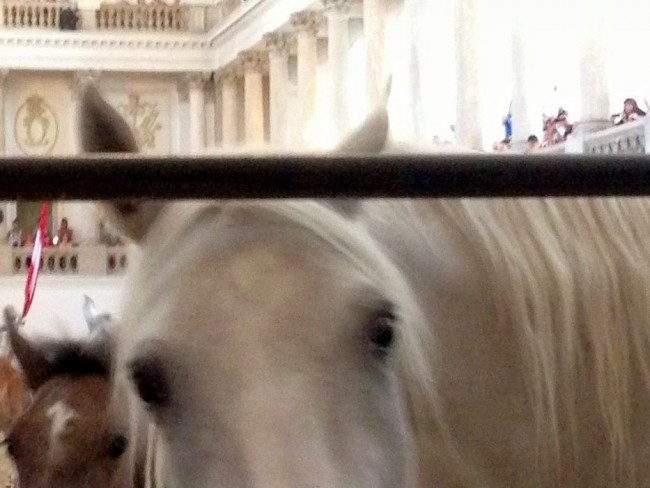
Looking for more great excursions near Vienna? Check out our list of the 10 best day trips from Vienna article.
